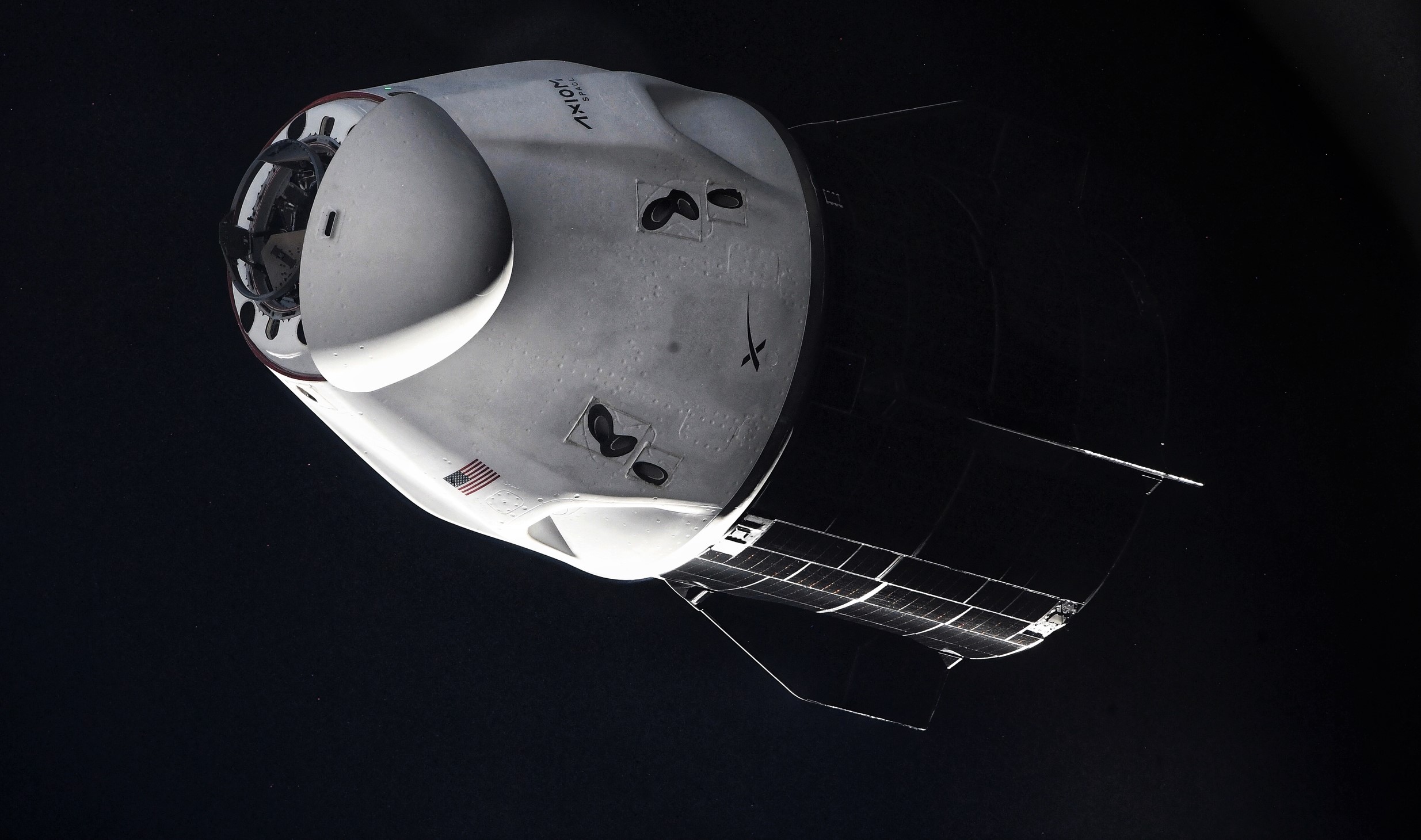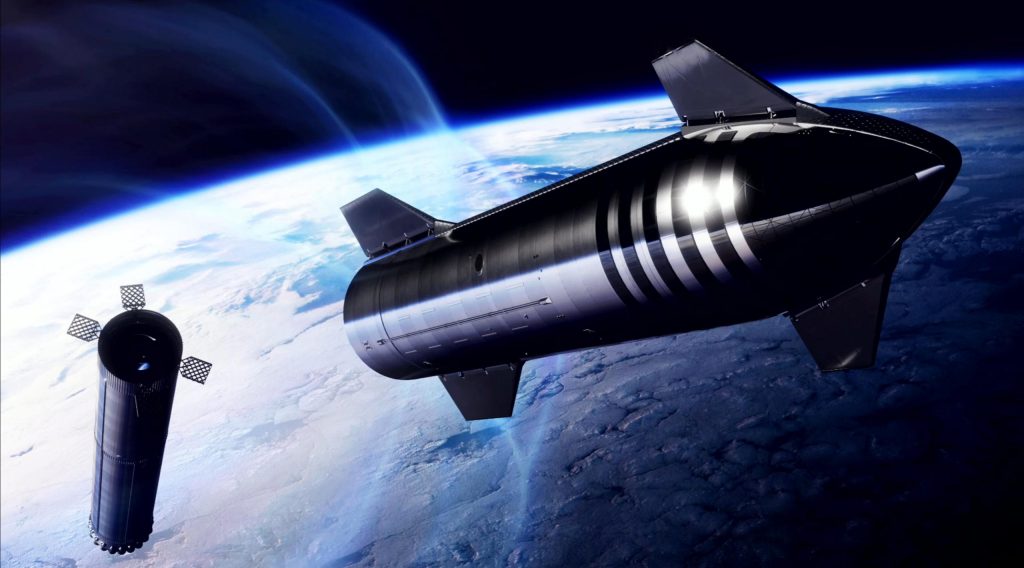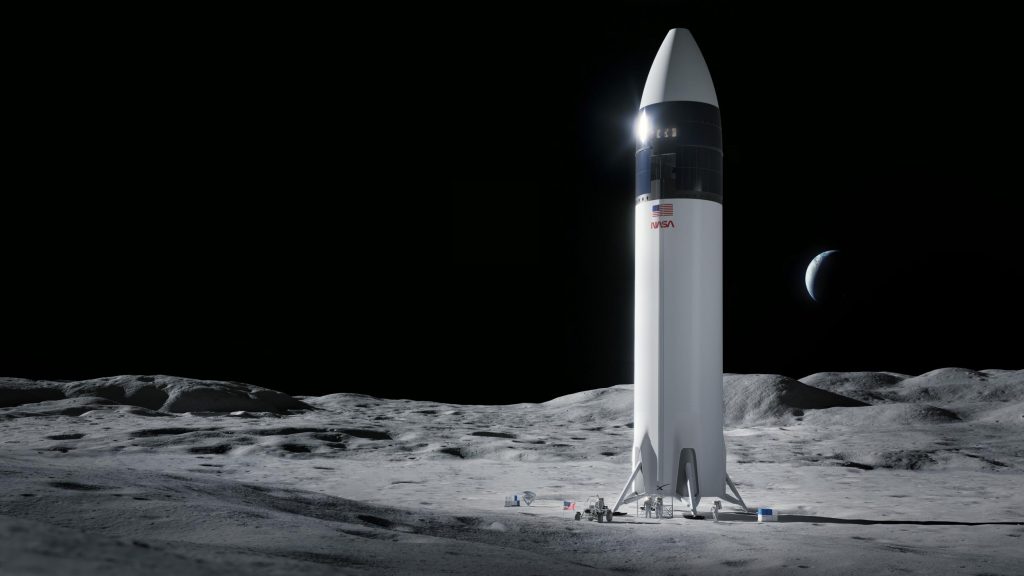

News
SpaceX director says six Crew Dragon launches per year is a sustainable goal
A senior manager says that SpaceX could sustainably launch six or more Crew Dragons per year if the market for private missions grows large enough to demand it.
Benji Reed, Senior Director of Human Spaceflight Programs, offered his thoughts on the matter in a press conference following SpaceX’s successfully recovery of Crew Dragon and four private Axiom-1 astronauts from the Gulf of Mexico, marking the end of the first all-private mission to the International Space Station (ISS). Asked what kind of launch cadence SpaceX believes it could handle going forward, Reed stated that he “would love to see…half a dozen crew flights…or more” per year and believes that “SpaceX can sustain that [pace] if there’s a market for it.”
The question is an important one after a SpaceX executive confirmed to Reuters earlier this year that the company has already ended production of Crew Dragon after building just a handful of reusable capsules. With that fleet of four spacecraft, it hasn’t been clear how many crewed missions SpaceX can – or thinks it can – launch each year. To some extent, it’s long been expected that SpaceX would try to replace both Falcon rockets and Dragon spacecraft with Starship as soon as the next-generation fully-reusable rocket is ready.
However, without major redesigns or a new and heavily modified variant of the rocket’s upper stage, it’s difficult to imagine NASA transitioning its International Space Station astronaut launches from Dragon to Starship anytime soon. Even though Starship could feasibly revolutionize spaceflight and NASA has already contracted with SpaceX to build a version of the rocket to land NASA astronauts on the Moon, the one thing it’s hard to imagine the space agency ever compromising on is safety. Crew Dragon has a built-in launch escape system that allows the capsule to almost instantly whisk astronauts away from a failing rocket at any point before or during a launch.


Starship has no such escape system and SpaceX has no apparent plans to develop a variant of the crew-carrying ship with a comparable abort system. Because the Starship rocket’s second stage is the orbital spacecraft, crew cabin, and reentry vehicle, it simply isn’t possible for the current design of the next-generation vehicle to match the theoretical safety of Falcon 9 and Crew Dragon. CEO Elon Musk has discussed increasing the number of engines on Starship to allow it to escape from a failing booster but that would leave astronauts with no way to escape from the upper stage itself.
On top of Dragon’s fundamentally superior safety capabilities, Falcon 9 also has an extraordinary record of 125 consecutively successful launches. If NASA wouldn’t let Dragon launch its astronauts on Falcon 9 without an active escape system, it’s hard to imagine how many consecutive launch successes Starship would need before the agency would even think about retiring Crew Dragon.
This is all to say that SpaceX is likely going to be stuck operating Crew Dragon for the indefinite future as long as it’s too stubborn to develop a true launch escape system for Starship. Even though the recently announced Polaris Program aims to culminate in the “first flight of Starship with humans on board,” it’s likely that most private SpaceX crew launch customers will follow NASA’s lead.
Thankfully, even with four Crew Dragon capsules, it’s likely that SpaceX can manage significantly more than six crewed missions per year if the demand is there and commercial passengers – mirroring NASA – aren’t ready to risk flying on Starship. Already, SpaceX has successfully launched the same Crew Dragon capsule to orbit twice in 137 days. If SpaceX continues flying back-to-back NASA crew transport missions while Boeing’s Starliner inches through qualification, that will tie up two Dragons per year, limiting SpaceX to two launches for NASA and around four to five private astronaut launches per year.

Assuming Starliner finally reaches operational readiness and begins supporting every other NASA crew launch, SpaceX could feasibly launch one NASA mission and seven private missions (lasting up to two weeks each) per year by the end of 2023. Additionally, if SpaceX can improve Crew Dragon turnaround to 120 days, the fleet could support 10 crew launches per year. 90 days? 13 launches per year. Private missions to the ISS would add plenty of schedule constraints, reducing the total number of opportunities, but that’s a minor problem in comparison.
The only lingering technical concern, then, is the longevity of SpaceX’s Crew Dragon capsule fleet. SpaceX and NASA have initially certified each capsule for five missions, but after Crew-4’s April 27th launch, the fleet has already eaten up 7 of the 20 flights that limit permits. Assuming no additional demand for private launches, the remaining 13 ‘certified’ flights might last SpaceX through 2024. Sooner than later, with NASA’s blessing, it will either need to significantly increase the number of missions each capsule is certified to fly, build new capsules, or find a way to transition to Starship.
News
These Tesla, X, and xAI engineers were just poached by OpenAI
The news is the latest in an ongoing feud between Elon Musk and the Sam Altman-run firm OpenAI.

OpenAI, the xAI competitor for which Elon Musk previously served as a boardmember and helped to co-found, has reportedly poached high-level engineers from Tesla, along with others from xAI, X, and still others.
On Tuesday, Wired reported that OpenAI hired four high-level engineers from Tesla, xAI, and X, as seen in an internal Slack message sent by co-founder Greg Brockman. The engineers include Tesla Vice President of Software Engineering David Lau, X and xAI’s head of infrastructure engineering Uday Ruddarraju, and fellow xAI infrastructure engineer Mike Dalton. The hiring spree also included Angela Fan, an AI researcher from Meta.
“We’re excited to welcome these new members to our scaling team,” said Hannah Wong, an OpenAI spokesperson. “Our approach is to continue building and bringing together world-class infrastructure, research, and product teams to accelerate our mission and deliver the benefits of AI to hundreds of millions of people.”
Lau has been in his position as Tesla’s VP of Software Engineering since 2017, after previously working for the company’s firmware, platforms, and system integration divisions.
“It has become incredibly clear to me that accelerating progress towards safe, well-aligned artificial general intelligence is the most rewarding mission I could imagine for the next chapter of my career,” Lau said in a statement to Wired.
🚨Optimistic projections point to xAI possibly attaining profitability by 2027, according to Bloomberg's sources.
If accurate, this would be quite a feat for xAI. OpenAI, its biggest rival, is still looking at 2029 as the year it could become cash flow positive.💰 https://t.co/pE5Z9daez8
— TESLARATI (@Teslarati) June 18, 2025
READ MORE ON OPENAI: Elon Musk’s OpenAI lawsuit clears hurdle as trial looms
At xAI, Ruddarraju and Dalton both played a large role in developing the Colossus supercomputer, which is comprised of over 200,000 GPUs. One of the major ongoing projects at OpenAI is the company’s Stargate program,
“Infrastructure is where research meets reality, and OpenAI has already demonstrated this successfully,” Ruddarraju told Wired in another statement. “Stargate, in particular, is an infrastructure moonshot that perfectly matches the ambitious, systems-level challenges I love taking on.”
Elon Musk is currently in the process of suing OpenAI for shifting toward a for-profit model, as well as for accepting an investment of billions of dollars from Microsoft. OpenAI retaliated with a counterlawsuit, in which it alleges that Musk is interfering with the company’s business and engaging in unfair competition practices.
Elon Musk confirms Grok 4 launch on July 9 with livestream event
News
SpaceX share sale expected to back $400 billion valuation
The new SpaceX valuation would represent yet another record-high as far as privately-held companies in the U.S. go.

A new report this week suggests that Elon Musk-led rocket company SpaceX is considering an insider share sale that would value the company at $400 billion.
SpaceX is set to launch a primary fundraising round and sell a small number of new shares to investors, according to the report from Bloomberg, which cited people familiar with the matter who asked to remain anonymous due to the information not yet being public. Additionally, the company would sell shares from employees and early investors in a follow-up round, while the primary round would determine the price for the secondary round.
The valuation would represent the largest in history from a privately-owned company in the U.S., surpassing SpaceX’s previous record of $350 billion after a share buyback in December. Rivaling company valuations include ByteDance, the parent company of TikTok, as well as OpenAI.
Bloomberg went on to say that a SpaceX representative didn’t respond to a request for comment at the time of publishing. The publication also notes that the details of such a deal could still change, especially depending on interest from the insider sellers and share buyers.
Axiom’s Ax-4 astronauts arriving to the ISS! https://t.co/WQtTODaYfj
— TESLARATI (@Teslarati) June 26, 2025
READ MORE ON SPACEX: SpaceX to decommission Dragon spacecraft in response to Pres. Trump war of words with Elon Musk
SpaceX’s valuation comes from a few different key factors, especially including the continued expansion of the company’s Starlink satellite internet company. According to the report, Starlink accounts for over half of the company’s yearly revenue. Meanwhile, the company produced its 10 millionth Starlink kit last month.
The company also continues to develop its Starship reusable rocket program, despite the company experiencing an explosion of the rocket on the test stand in Texas last month.
The company has also launched payloads for a number of companies and government contracts. In recent weeks, SpaceX launched Axiom’s Ax-4 mission, sending four astronauts to the International Space Station (ISS) for a 14-day stay to work on around 60 scientific experiments. The mission was launched using the SpaceX Falcon 9 rocket and a new Crew Dragon capsule, while the research is expected to span a range of fields including biology, material and physical sciences, and demonstrations of specialized technology.
News
Tesla Giga Texas continues to pile up with Cybercab castings
Tesla sure is gathering a lot of Cybercab components around the Giga Texas complex.

Tesla may be extremely tight-lipped about the new affordable models that it was expected to start producing in the first half of the year, but the company sure is gathering a lot of Cybercab castings around the Giga Texas complex. This is, at least, as per recent images taken of the facility.
Cybercab castings galore
As per longtime drone operator Joe Tegtmeyer, who has been chronicling the developments around the Giga Texas complex for several years now, the electric vehicle maker seems to be gathering hundreds of Cybercab castings around the factory.
Based on observations from industry watchers, the drone operator appears to have captured images of about 180 front and 180 rear Cybercab castings in his recent photos.
Considering the number of castings that were spotted around Giga Texas, it would appear that Tesla may indeed be preparing for the vehicle’s start of trial production sometime later this year. Interestingly enough, large numbers of Cybercab castings have been spotted around the Giga Texas complex in the past few months.
Cybercab production
The Cybercab is expected to be Tesla’s first vehicle that will adopt the company’s “unboxed” process. As per Tesla’s previous update letters, volume production of the Cybercab should start in 2026. So far, prototypes of the Cybercab have been spotted testing around Giga Texas, and expectations are high that the vehicle’s initial trial production should start this year.
With the start of Tesla’s dedicated Robotaxi service around Austin, it might only be a matter of time before the Cybercab starts being tested on public roads as well. When this happens, it would be very difficult to deny the fact that Tesla really does have a safe, working autonomous driving system, and it has the perfect vehicle for it, too.
-

 Elon Musk1 week ago
Elon Musk1 week agoTesla investors will be shocked by Jim Cramer’s latest assessment
-

 News2 weeks ago
News2 weeks agoTesla Robotaxi’s biggest challenge seems to be this one thing
-

 Elon Musk1 day ago
Elon Musk1 day agoElon Musk confirms Grok 4 launch on July 9 with livestream event
-

 News2 weeks ago
News2 weeks agoWatch the first true Tesla Robotaxi intervention by safety monitor
-

 News5 days ago
News5 days agoTesla Model 3 ranks as the safest new car in Europe for 2025, per Euro NCAP tests
-

 Elon Musk2 weeks ago
Elon Musk2 weeks agoA Tesla just delivered itself to a customer autonomously, Elon Musk confirms
-

 Elon Musk2 weeks ago
Elon Musk2 weeks agoElon Musk confirms Tesla Optimus V3 already uses Grok voice AI
-

 Elon Musk2 weeks ago
Elon Musk2 weeks agoxAI welcomes Memphis pollution results, environmental groups push back

















